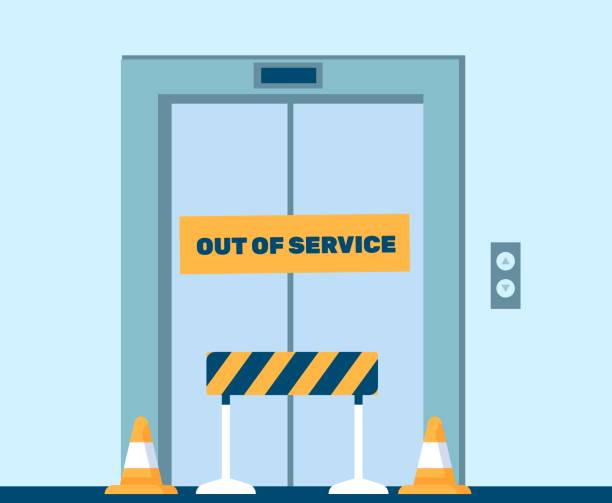Cost Effective Lift Repair Providers: An Overview to Reliable Lift Servicing Companies
Lift Maintenance RepairElevator Suite Britannia Street Tividale B69 2PG
01926 266127
A Thorough Method to Enhancing Performance Via Strategic Lift Repair Service Methods
In the realm of facility management, the performance and dependability of lifts play an essential duty in making certain smooth procedures. A methodical and tactical technique to lift repair work and upkeep is critical to maximize efficiency and minimize downtime. By dealing with typical lift issues, implementing aggressive upkeep steps, and creating targeted repair work strategies, centers can maximize their lift systems to operate at peak performance levels. However, the trick to accomplishing continual improvement depends on using data-driven insights to notify decision-making processes and drive continuous improvement. This extensive method to improving lift efficiency through strategic repair methods holds the pledge of not just enhancing functional effectiveness yet likewise expanding the life expectancy of lift systems.
Relevance of Lift Performance Optimization
Comprehending the relevance of maximizing lift performance is critical for making sure efficient and reputable upright transport systems in numerous buildings and structures. Lifts are important parts of contemporary infrastructure, providing vertical movement for occupants and products within buildings of varying elevations. By maximizing lift performance, structure owners and facility managers can enhance individual experience, improve power effectiveness, and increase general functional performance.
Efficient lift performance optimization includes various variables, consisting of rate, ability, power intake, safety, and maintenance requirements. Correctly maximized lifts can decrease wait times for customers, especially in high-traffic buildings, leading to improved complete satisfaction and performance. Furthermore, enhanced lifts contribute to power financial savings by utilizing sophisticated control systems and innovations that decrease power usage without compromising efficiency.

Identifying Common Lift Issues
Determining typical lift problems is vital for preserving the operational efficiency and safety of upright transportation systems in buildings. This problem can be a sign of troubles with the lift's motor, control system, or even the placement of the lift cars and truck.
An additional common lift problem is odd sounds rising from the lift shaft or machinery area. These noises can vary from grinding or scratching audios to loud clunking sounds, all of which may signify underlying mechanical issues that call for prompt interest. In addition, frequent door malfunctions, such as doors not opening up or closing properly, can interrupt the smooth flow of passengers and present safety and security risks.
Implementing Proactive Upkeep Measures
To maximize the efficiency and longevity of lift systems, positive Get More Information maintenance steps play a vital duty in making certain functional dependability and safety. lift repair. Executing positive upkeep entails systematically checking, maintenance, and repairing parts prior to they fail, hence avoiding expensive downtime and possible security dangers. Regularly scheduled examinations can aid recognize small problems before they rise into major issues, inevitably expanding the life expectancy of lift systems
One key facet of proactive maintenance is developing a thorough upkeep routine based on maker recommendations and industry finest practices. This schedule should describe tasks such as lubrication, positioning checks, and element substitutes at specified intervals. Additionally, executing problem surveillance strategies, such as vibration evaluation and thermal imaging, can help discover early indicators of wear or malfunction.
Moreover, training upkeep team on proper evaluation methods and precautionary upkeep treatments is essential for the effective application of proactive upkeep actions. By promoting a society of positive upkeep within an organization, lift systems can operate at peak efficiency levels, decreasing interruptions and ensuring the security of users.
Establishing Targeted Repair Plans
Upon evaluating the upkeep records and efficiency information, the design group can establish targeted repair strategies to enhance and resolve specific concerns lift system capability. These fixing plans are tailored to the determined troubles, making certain that resources are concentrated on settling essential problems effectively. By focusing on repair work based on their influence on performance and security, the targeted fixing strategies assist lessen downtime and upkeep costs while optimizing the lift system's integrity.
Establishing these plans includes a detailed evaluation of the lift system parts, including motors, wires, brakes, and control systems. Through this detailed analysis, the engineering group can establish the source of any kind of breakdowns or destruction in efficiency. This info is after that used to create a roadmap for the repair service procedure, describing the essential actions, timeline, and resources required to resolve each concern effectively.
In addition, targeted repair work plans may consist of preventative steps to boost the lift system's durability and efficiency. By proactively addressing prospective concerns prior to they rise, these plans add to the total effectiveness and safety of the lift system.
Making Use Of Data-Driven Insights
Harnessing the power of data-driven understandings is important in enhancing lift system efficiency and maintenance effectiveness. These anticipating maintenance techniques help protect against unforeseen break downs, minimize downtime, and expand the life-span of lift systems.

Conclusion
To conclude, optimizing lift efficiency is critical for ensuring efficiency and safety and security in buildings. By determining common lift issues, applying positive maintenance procedures, creating targeted fixing strategies, and utilizing data-driven understandings, companies can enhance efficiency and reduce downtime. It is essential to take a detailed approach to raise fixing approaches to take full advantage of operational performance and make sure the longevity of lift systems.
By resolving usual lift issues, implementing proactive maintenance actions, and developing targeted repair work plans, facilities can maximize their lift systems to run at peak performance degrees.An additional prevalent lift problem is strange noises rising from the lift shaft or machinery space.Upon evaluating the upkeep documents and efficiency data, the design team can create targeted repair service plans to enhance and deal with particular problems lift system capability. By focusing on repair services based on their impact on performance and safety and security, the targeted repair service strategies help minimize downtime and maintenance prices while making the most of the lift system's dependability.
It is essential to take a detailed strategy to lift repair service strategies to maximize operational performance and ensure the longevity of lift systems.